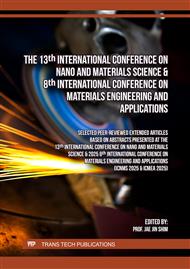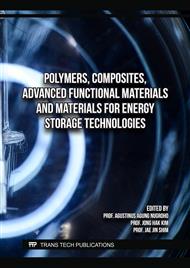p.45
p.55
p.65
p.75
p.83
p.91
p.103
p.109
p.115
Zinc-Manganese Electrodeposition on Aluminum Alloys 3003 and 6061 for Enhanced Aluminium-Air Battery Performance
Abstract:
Aluminum-Air Batteries (AABs) are considered to be an attractive candidate as a energy storage technology due to their abundant raw material availability, high theoretical capacity, energy density, and safety. However, the development of these batteries is hindered by limited energy efficiency, primarily due to the high rate of self-corrosion of the aluminum anode in alkaline solutions, both under open-circuit conditions and during battery discharge. This research aims to enhance the performance of aluminum anodes in AABs by using commercials aluminum alloys as anodes and modifying their surfaces through the electrodeposition of zinc and manganese (Zn-Mn). The electrolyte used in this AAB is an alkaline solution consist of KOH 4M with 0,2M ZnO and 100mg/L CTAB as additive. The results show that electrodeposition was successfully conducted, leading to reduced corrosion rate as observed in linear polarization tests. Furthermore, electrodeposition contributed to increase battery cycle life, capacity discharge and energy discharge, as demonstrated by charge-discharge tests.
Info:
Periodical:
Pages:
109-114
Citation:
Online since:
June 2025
Price:
Сopyright:
© 2025 Trans Tech Publications Ltd. All Rights Reserved
Share:
Citation:



